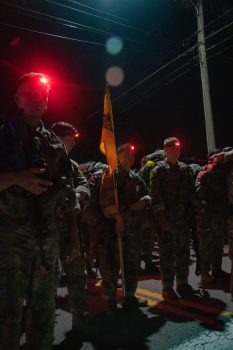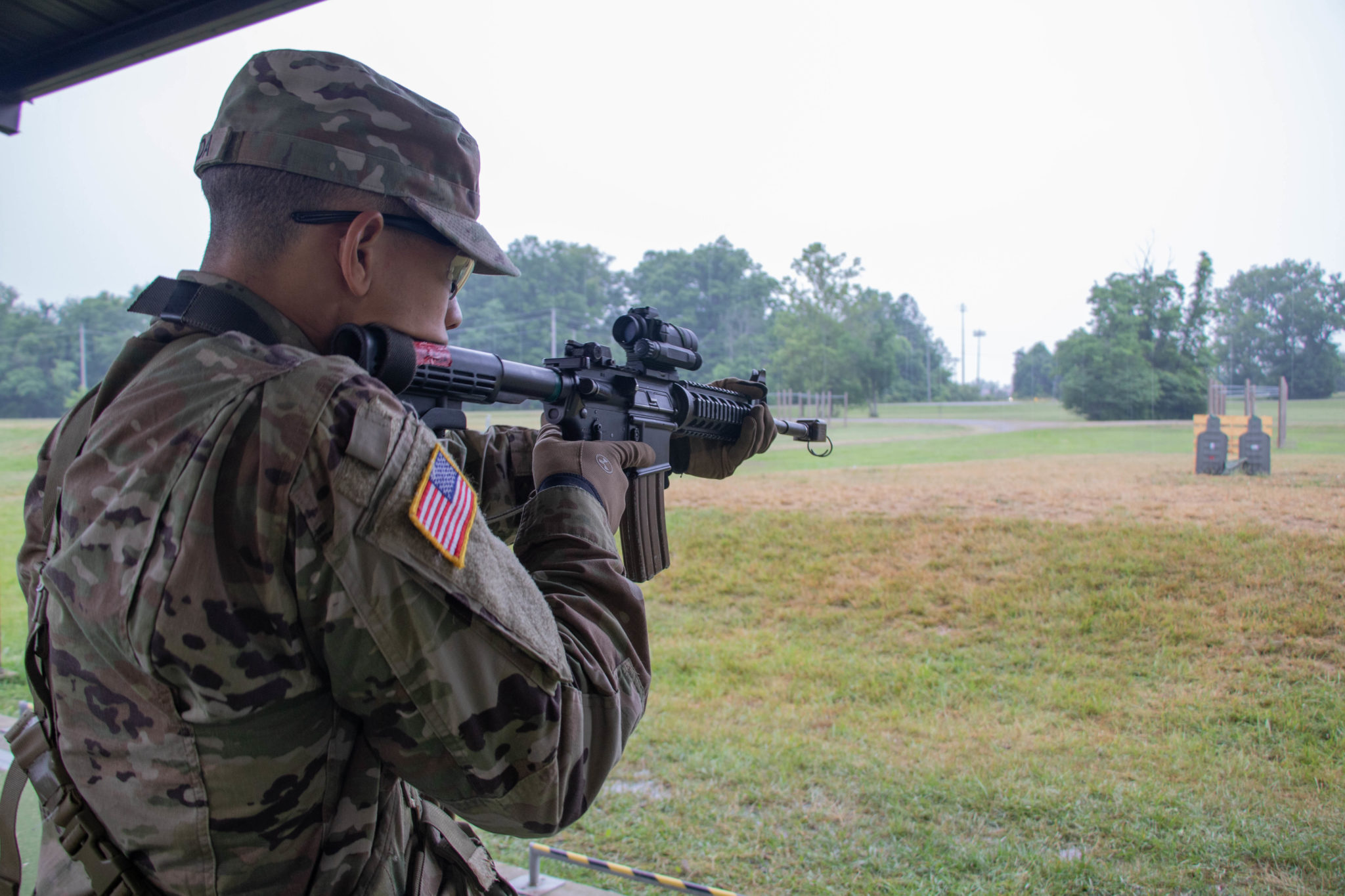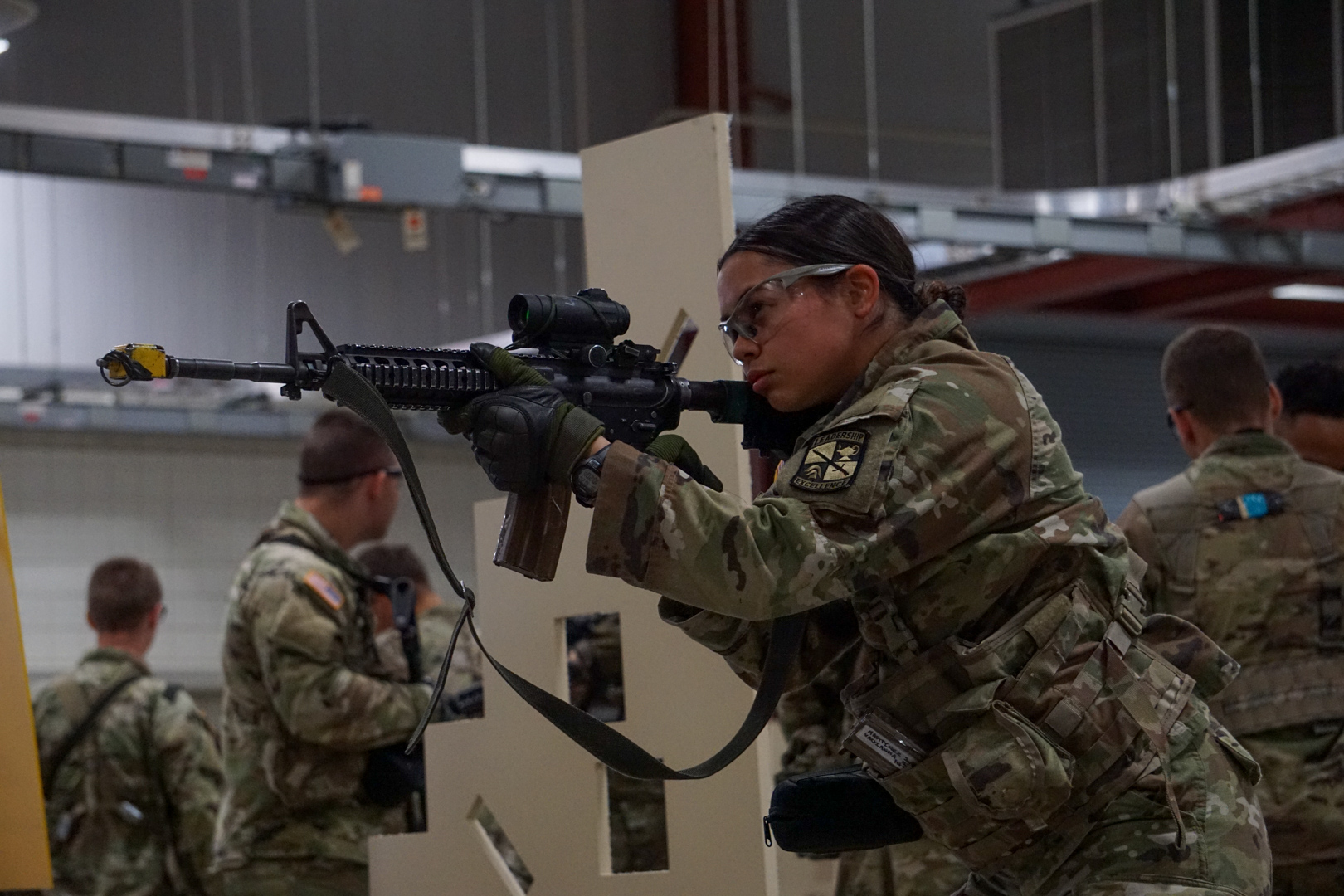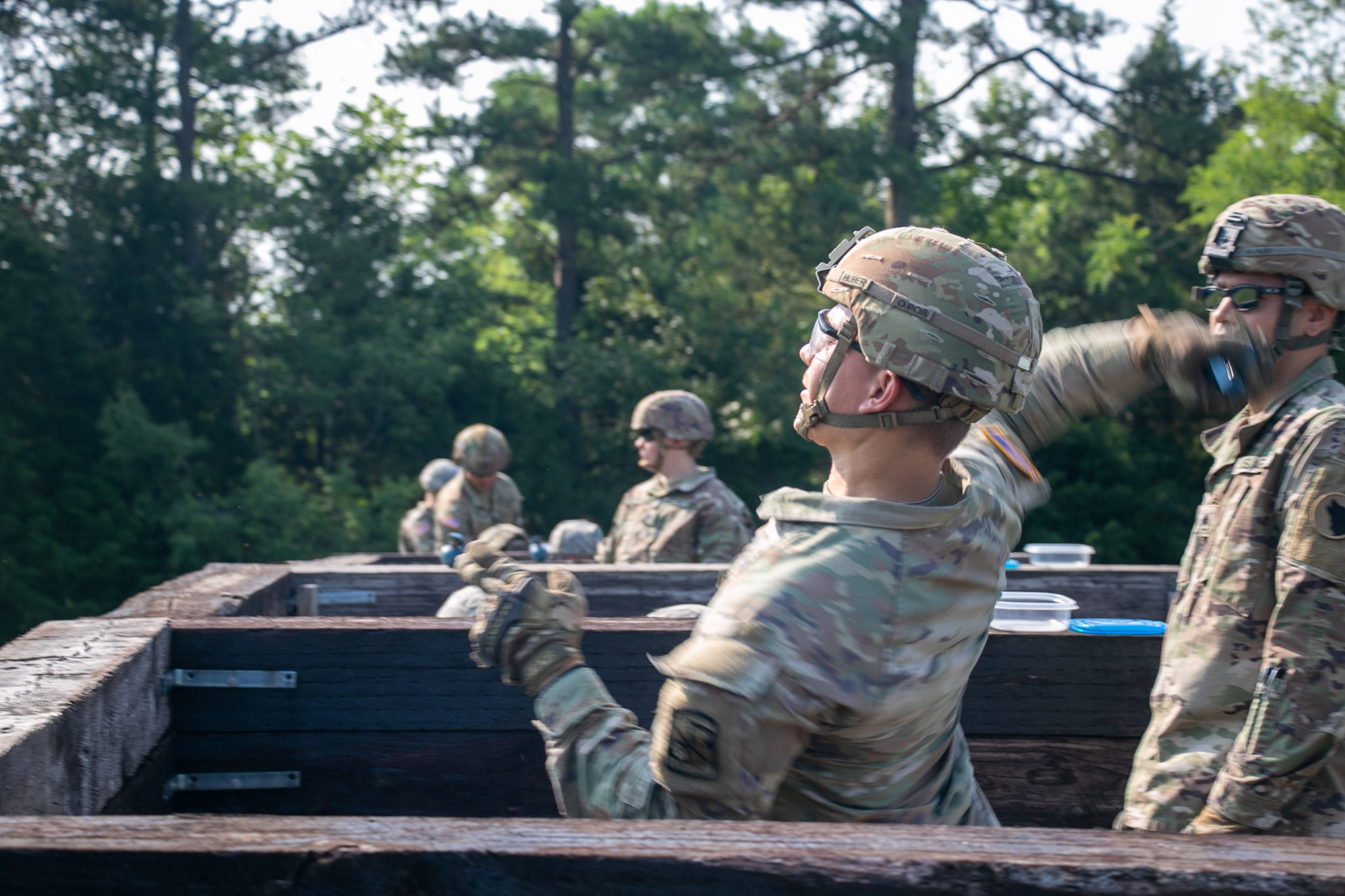On the early morning on July 29, 2021, when the moon was still high in the sky above Fort Knox, Ky., the Cadets of 11th Regiment, Advanced Camp donned their rifles and rucksacks, strapped bright red safety lights to their heads and took to the vacant streets to complete a six-mile march of endurance.

“This is a ruck march, this is to test their endurance, and to just make sure that they’re prepared to move themselves and their equipment across the battlefield if they have to,” said Capt. Harrison Coch, of the University of Wisconsin, Steven’s point. “They can expect to build their confidence and gain a greater understanding of how their body reacts under a load.”
“This is pivotal to their core Army foundational experience,” said Maj. Joseph Snyder, of Oregon State University. “As the Army, we are the ground force of the United States defense … It’s what every soldier should be able to do: put equipment on their back and move a set distance under time.”
This was no task to be taken lightly. These Cadets carried in their rucks the supplies they would be expected to take into the field with the goal of being able to sustain them for seventy-two hours, weighing at least thirty-five pounds. Couple this with a rifle, an Army jacket, and a time limit, and you had the recipe for an exhausting morning.
The longest a Cadet could take to cross the finish line was two hours, but to qualify for RECONDO, a special award for those who exceed expectations in all events, Cadets needed to finish in less than 90 minutes.
There were, however, measures in place to prevent overly-enthusiastic Cadets from moving too fast. In the high heat and humidity of a Kentucky summer, heat casualties are a real threat, even at night. Snyder was tasked with marching ahead of the Regiment at a steady pace of 14 minutes per mile, and would not let any Cadets go faster than him for their own safety.
In addition to Cadre, many more actions were taken to ensure that no Cadet’s health would be at risk, such as mandatory ice water arm immersion stations placed at the finish-line and halfway point, medical personnel on standby, and readily available water and electrolytes for all Cadets before, during, and afterwards.
“We were not taking any chances,” said Snyder. “I wouldn’t say it’s overkill, but it’s comprehensive.”

These safety measures helped, but the march was still tough for the Cadets, and for many it helped to have something to keep them motivated through the exhaustion. Cadet Nicholas Duenas from Florida Atlantic University, who finished with RECONDO qualification, does it for his wife Stephanie, and their two young children, Matteo and Macy.
“We have to get over all the pain that you go through, especially up hill, there were a lot of hills. Once you get over that hill, you have these downhills where you can just let go and your legs kind of go by themselves. It’s like in life, if you’re able to trek up that hill, you have an easy downhill,” said Duenas. “All I picture is the day I graduate with my mechanical engineering degree, and I get my officer commission, it’s going to be that downhill.”




